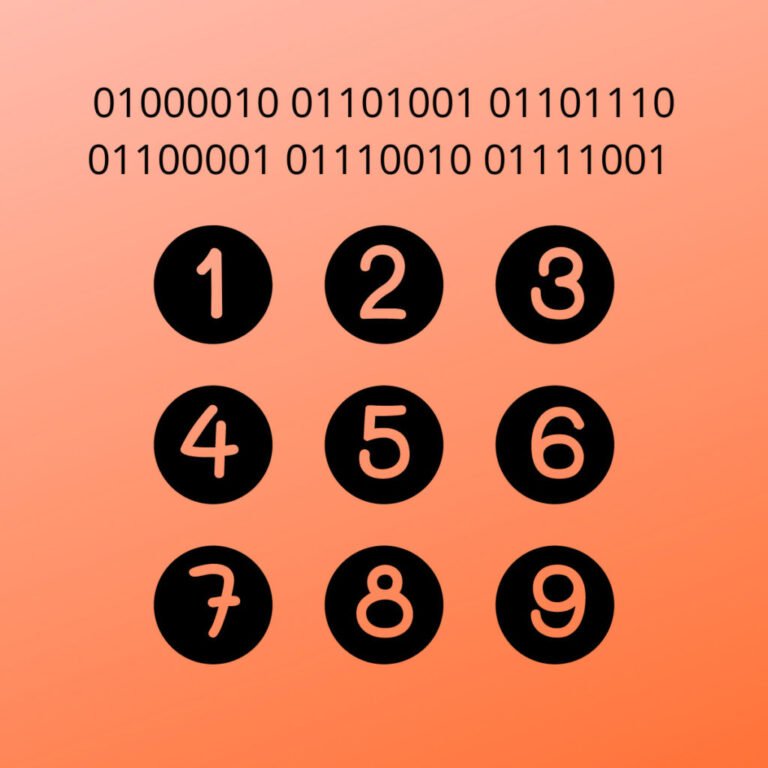Binary numbers are fundamental in computer science and digital systems. They are used to represent data in a way that computers can understand, using only 0s and 1s. If you’ve come across the binary number 1110001001 and want to know what it means, this guide will help you decode it in a simple, clear manner.
In this article, we will explain the conversion process of 1110001001 from binary to decimal and explore its significance.
Understanding Binary Representation
Before we convert the binary number, it’s essential to understand how the binary system works. In the binary number system, each digit is a power of 2. Starting from the rightmost bit (the least significant bit), each bit represents a power of 2, increasing as we move left.
For example, the binary number 1010 represents:
- 1 * (2^3) = 8
- 0 * (2^2) = 0
- 1 * (2^1) = 2
- 0 * (2^0) = 0
Adding these together gives 8 + 0 + 2 + 0 = 10 in decimal.
Now, let’s apply this understanding to the binary number 1110001001.
Converting 1110001001 from Binary to Decimal
To convert 1110001001 from binary to decimal, we will follow the same process, where each bit represents a power of 2. We will start by assigning powers of 2 to each digit, from right to left.
The binary number is:
1110001001
Each digit represents a power of 2:
- (2^9) = 512
- (2^8) = 256
- (2^7) = 128
- (2^6) = 64
- (2^5) = 32
- (2^4) = 16
- (2^3) = 8
- (2^2) = 4
- (2^1) = 2
- (2^0) = 1
Now, we multiply each bit by the corresponding power of 2:
- 1 * 512 = 512
- 1 * 256 = 256
- 1 * 128 = 128
- 0 * 64 = 0
- 0 * 32 = 0
- 0 * 16 = 0
- 1 * 8 = 8
- 0 * 4 = 0
- 0 * 2 = 0
- 1 * 1 = 1
Add up the results:
512 + 256 + 128 + 8 + 1 = 905
Therefore, the binary number 1110001001 is equal to 905 in decimal.
What Does 1110001001 Represent?
The value 905 in decimal could represent various things, depending on the context. For instance:
- In computing: It could represent a number stored in a computer’s memory, used for calculations or as part of an instruction.
- In text encoding: If interpreted as part of an encoding scheme like ASCII or Unicode, it could correspond to a specific character or symbol (though, as an ASCII character, 905 does not map to a printable character).
- In a real-world scenario: The number 905 could simply be an identifier, a time value, or a count, depending on the application.
Other Ways to Interpret Binary Numbers
While 905 is the direct decimal translation of 1110001001, binary numbers can have other uses:
- Binary-coded Decimal (BCD): Some systems represent each decimal digit in binary, so a binary number like 1110001001 could be part of a larger set of digits used in BCD encoding.
- Floating Point Representation: In more complex scenarios, binary numbers might represent fractions, real numbers, or even encoded instructions in machine language.
Conclusion
The binary number 1110001001 equals 905 in decimal. By following the simple method of assigning powers of 2 to each binary digit and summing the results, we can convert any binary number into its decimal equivalent. This is a crucial skill in computing and helps bridge the gap between how computers process data and how we, as humans, interpret numbers in our daily lives.
Binary numbers form the foundation of digital systems and are used extensively in programming, electronics, and computer science. Whether you are a beginner or more advanced in your understanding of binary math, this conversion process is one of the building blocks of mastering how computers work.
